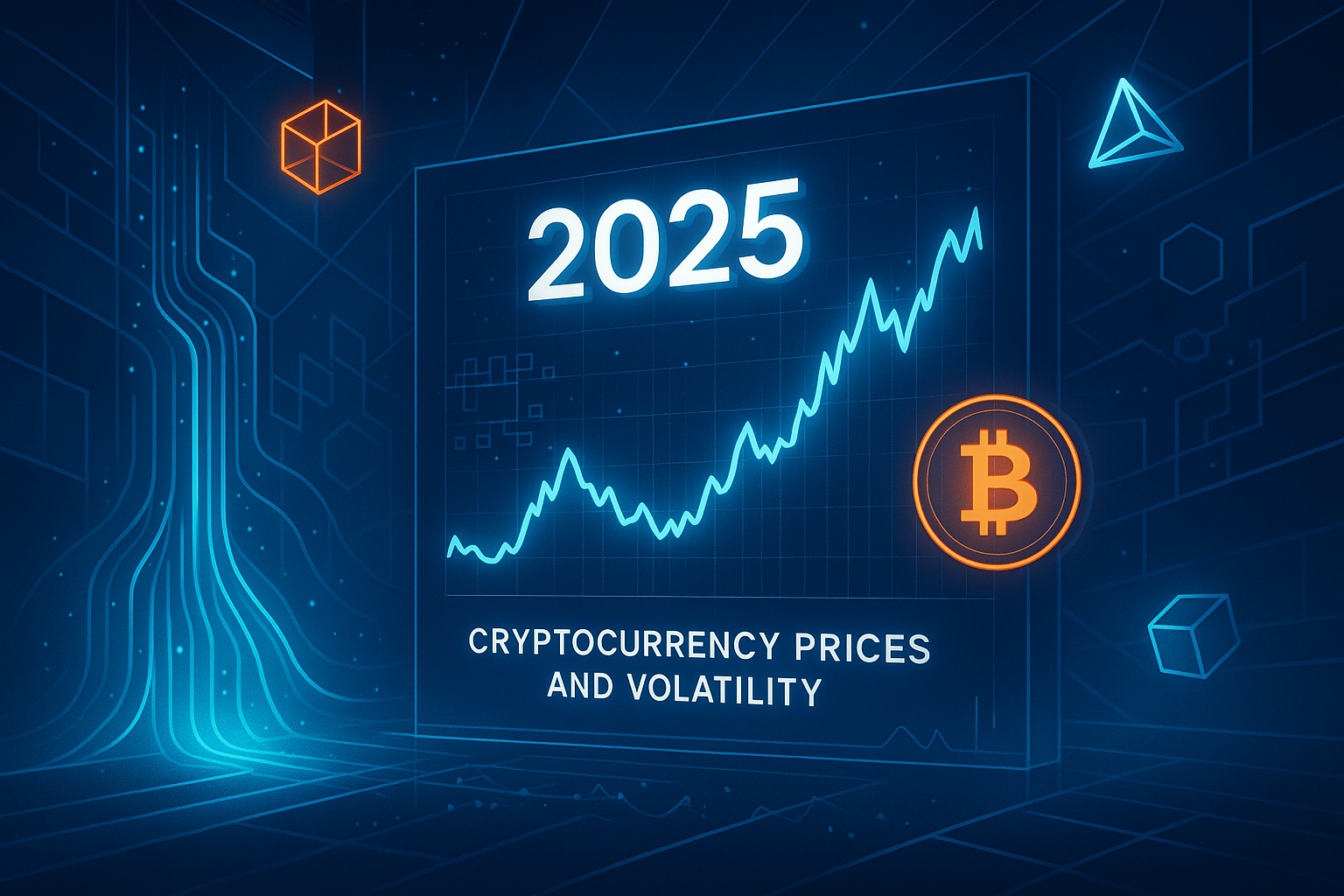As the cryptocurrency market navigates through 2025, we encounter a landscape marked by significant volatility, macroeconomic pressures, evolving regulatory frameworks, and technological advancements that collectively shape investment strategies for institutional players. Price dynamics in the cryptocurrency market are influenced by a myriad of factors, making it critical for investors to remain informed and proactive.
Bitcoin (BTC) currently trades at $54,500 with a market capitalization of approximately $1.05 trillion, while Ethereum (ETH) is seeing prices around $3,800, with a market cap of roughly $450 billion. These valuations reflect not only the cryptocurrencies' relative strength against other digital assets but also their connection to broader economic conditions.

In analyzing the market’s technical structure, we turn to several key indicators. The Moving Average (MA) system suggests a bullish trend for both BTC and ETH, as the short-term MA has consistently stayed above the long-term MA for several months, indicating sustained upward momentum. The Relative Strength Index (RSI) for Bitcoin is currently at 68, suggesting that it is approaching overbought territory. The Ethereum RSI is somewhat more conservative at 62. Given that RSI values above 70 typically indicate overbought conditions, we could anticipate pullbacks in prices should market sentiment shift.
When assessing price action alongside Fibonacci retracement levels, Bitcoin is currently testing the 61.8% retracement level around $53,000. A significant pullback could theoretically see prices retrace to the 50% level, roughly $48,500, before any further upside. Conversely, should resistance hold, a breach above the current all-time high of $69,000 is within possibility, given macroeconomic stimulants such as inflation concerns driving interest in digital gold.

Ethereum’s trading behavior offers a similar narrative, with the current price stabilizing near its 61.8% Fibonacci retracement ceiling, indicating potential resistance levels at $3,900 and $4,000. With deployment of Layer-2 scaling solutions showing tangible impacts on transaction speed and reduced fees, we could anticipate ETH gaining traction due to enhanced user adoption.
As institutional adoption continues to rise, we have observed a notable uptick in investment flows across cryptocurrencies. According to blockchain analytics firms, institutional investments have surged to over $10 billion in the first quarter of 2025 alone, with venture capital firms leading the charge by deploying capital into various blockchain startups. Notably, Tesla’s strategic reallocation of parts of its $10 billion treasury into Bitcoin reflects a broader trend; organizations are increasingly viewing cryptocurrencies as legitimate assets for hedging against inflation and currency devaluation.

Exchange-Traded Funds (ETFs), which have proliferated in recent months, are playing a crucial role in enhancing liquidity and attracting a broader investor base. The $3 billion Bitcoin ETF launch in February 2025 has unlocked significant market access for traditional investors, allowing diversified exposure to digital assets without owning them directly. As regulatory clarity continues to improve, we can expect more financial products to emerge, which will likely bolster market stability and facilitate further investment inflows.
Technologically, 2025 is witnessing remarkable advancements in blockchain networks facilitating enhanced transaction efficiency and reduced operational costs. Breakthroughs in layer-2 protocols, such as zk-Rollups and Optimistic Rollups, are increasing Ethereum’s capacity to handle large transaction volumes, mitigating congestion issues that previously plagued the network. This improvement, combined with Ethereum's shift towards a proof-of-stake mechanism, enhances its value proposition and institutional appeal, as it underscores a commitment to sustainability and efficiency.

Decentralized Finance (DeFi) applications are disrupting traditional financial paradigms and demonstrate a strong resilience amidst market volatility. As of now, the total value locked (TVL) in DeFi projects has reached $85 billion, showcasing massive adoption potential. Institutions engaging in liquidity provision or yield farming are witnessing returns that far exceed those available in conventional finance, positioning them favorably within a low-interest environment.
However, as institutional investors pivot toward these innovative sectors, capital must proceed with caution given existing risk factors. The cryptocurrency market is inherently volatile, and while Bitcoin's historical standard deviation remains above 80%, it is crucial to be aware of the catalysts behind market swings. Recent events, such as the crash of FTX and subsequent regulatory investigations, evidenced the susceptibility of the market to significant shocks. Historical data suggests that geopolitical tensions, such as the recent conflict in Eastern Europe and macroeconomic policies from central banks, can exacerbate volatility.

Moreover, regulatory developments loom large on the horizon as governments worldwide grapple with the implications of digital assets. Legislative frameworks are expected to tighten around stablecoins, prompted by concerns over consumer protection and systemic risks, especially following the U.S. Treasury's recent discussions on stablecoin issuance and management. The requirement for new standards could recalibrate market dynamics, impacting liquidity in unregulated avenues and influencing institutional players' risk appetites.
Compliance challenges remain a key consideration for institutions. The cryptocurrency landscape is fractioned by inconsistent regulatory practices across jurisdictions. While the European Union is moving towards comprehensive regulations, other regions could face hurdles that could deter institutional involvement. Regulatory uncertainty, particularly concerning tax treatment and securities classification, has a direct impact on how institutions strategize their entries and exits from crypto markets.
As we assess the competitive landscape, there is an undeniable saturation of new cryptocurrencies vying for institutional attention. Notably, Binance Coin (BNB), Cardano (ADA), and Solana (SOL) are distinguished by their unique functionalities and market positions, fostering investor interest. The emergence of innovative projects that emphasize governance models and cross-chain compatibility, like Polkadot (DOT) and Cosmos (ATOM), are indicative of the increasing sophistication and competitive nature of the ecosystem. Market capitalizations fluctuate significantly; as of April 2025, Solana boasts a market cap of $16 billion, with an aggressive focus on high-throughput capacities positioning it as a contender.
Stablecoins, including USDC and Tether (USDT), are becoming essential liquidity providers in a highly volatile environment, offering a refuge from rapid price fluctuations. With USDC now maintaining a market cap exceeding $40 billion, it highlights the necessity of stable assets for risk management.
As we advance towards 2025, the implications of our analysis suggest a multifaceted strategy for institutional investors. Diversifying portfolios to include a blend of established cryptocurrencies and emerging projects may prove advantageous. However, an acute awareness of macroeconomic shifts, regulatory changes, and technological advancements will be paramount in formulating actionable strategies.
As the cryptocurrency market evolves, it remains critical for institutional investors to harness comprehensive frameworks that integrate technical insights, assess risk management protocols, and closely monitor regulatory developments. With the horizon offering substantial opportunities intertwined with pronounced risks, employing a dynamic strategy can catalyze potential gains while safeguarding against market exposure.
